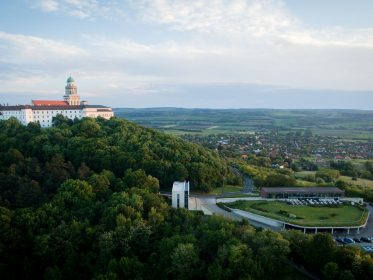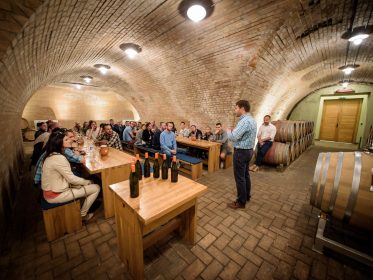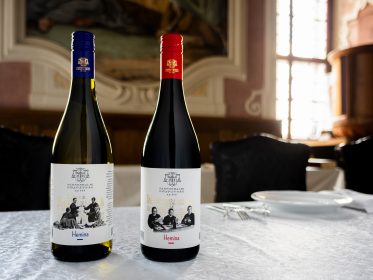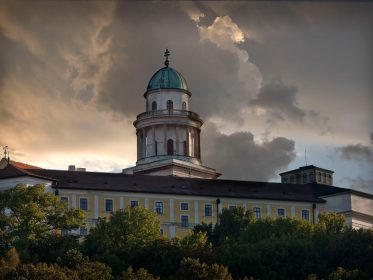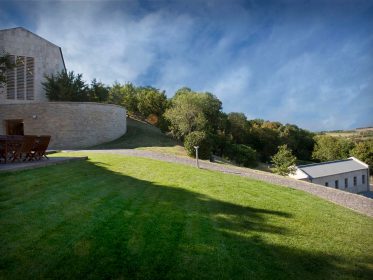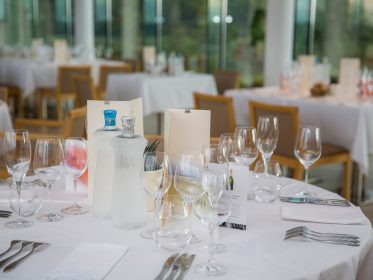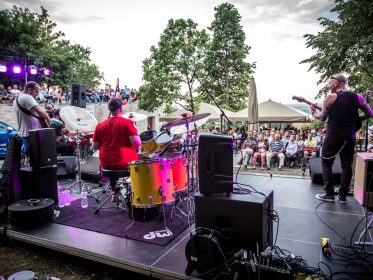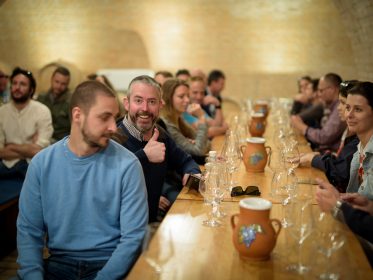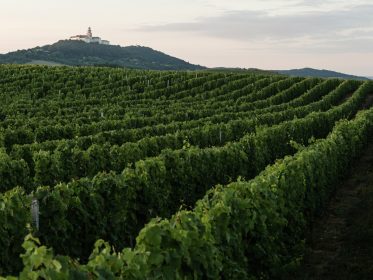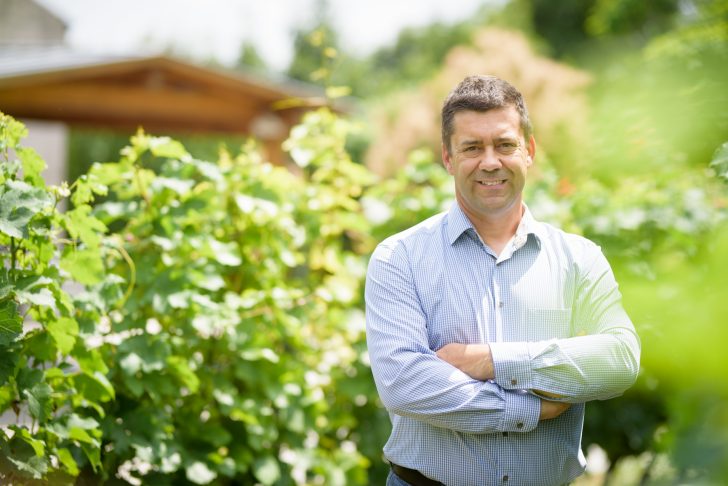Pannonhalma Archabbey: constellation of unique conditions and unusual technologies
Soon after building a church and monastery on the Sacred Mount of Pannonia in 996, the Benedictine monks revived the viticulture and wine-making tradition once pursued by the Romans but long since fallen into oblivion.
1000 years at present
The Benedictine monks who settled on the Sacred Mount of Pannonia in 996 have always been closely connected with the viticulture introduced by the Romans. For centuries, they have applied the highest prevailing standards of wine growing and vinification. At the beginning of the 1900’s, the Abbey held about 100 hectares of vineyards in the direct vicinity of Pannonhalma, and it also owned plantations on the Somló Hill and in Tokaj. Its bottled wines, both white and red, were sold in Hungary as well as abroad far beyond the borders of what was then Greater Hungary.
The political and social upheaval that followed World War II put an end to the centuries-old tradition when the single-party state confiscated the Abbey’s vineyard holdings and winery. During the decades that followed, the monks never gave up hopes of reviving the legacy of excellence one day. Finally, 10 years after the collapse of Communist rule, plans for rebirth took shape. As a result, a new winery with a floor space of 2000 m² and a storage capacity of 3000 hectolitres was established in 2003. The Pannonhalma Archabbey, since 1996 part of UNESCO World Heritage, is the majority owner, in partnership with the MKB Bank.
Historic vineyards replanted
The vineyards of the Pannonhalma Archabbey are situated in the officially designated wine region of Pannonhalma which, with a total area of about 600 hectares, is one of the smallest of the 22 historic wine regions of Hungary. The weather conditions are balanced with average sunshine hours and heat, and higher than average precipitation. Most of the vines are grown on brown forest soils that formed on loess and sand. Consistently from vineyard to vineyard and in all vertical intervals, the soils are alkaline owing to the presence of lime.
The winery cultivates about 50 hectares divided among four major vineyards, each of which used to belong to the Abbey in the historic past. The new vines planted under a program started in 2001 are spaced at a distance of 2.4 x 0.8 m; the training system is Guyot. The goal was to achieve a planting density of over 5000 vines per hectare in order to significantly cut the yield per wine to harvest much better quality fruit. In our choice of cultivation techniques, we strive to keep an optimal balance between modern mechanization and fastidious manual labour.
Grape varieties – indigenous locals and traditional internationals
Since the natural conditions of Pannonhalma closely resemble those of the upper Loire Valley and Alsace, two-thirds of our vineyards are planted by grape varieties that make crisp, easy-drinking white wines of fine quality. This is the style of wine we seek to produce mainly from Rheinriesling, Sauvignon Blanc, and Gewürztraminer.
In designing the composition of our vineyards, we have made it a point to uphold local and historic traditions by making room for Welshriesling, a native Hungarian variety as well as for Királyleányka, originally from Transylvania, the historic part of Hungary.
With visitors arriving from all corners of the world, we devoted one third of our acreage to popular international varieties that have shown good promise for the long term, such as Chardonnay, Pinot Blanc, Pinot Noir, Merlot, and Cabernet Franc. Among the red grapes, we give a prominent role to Pinot Noir as being ideally suited to the local climate and soils, and therefore uniquely capable of expressing the potential of Pannonhalma as a red wine producing district.
Through the lens of the winemaker
This roughly 50-hectare property, with four vineyards displaying pronounced differences in soils from loess to clay to limestone, offers me an unrivalled opportunity. The diversity of climatic conditions, along with the training system and varietal composition, both carefully chosen to suit those conditions, gives me excellent quality fruit to work with toward colourful wines of good concentration and firm varietal character.
The technologies adopted at our gravitational winery enable us to preserve the original distinctive qualities of the grapes in the finished wine. The machinery and equipment we use provide reliable support for a wide range of oenological operations, from the making of crisp and vigorous whites in stainless steel to crafting full-bodied, meaty, ambitious whites from our finest sites that are both fermented and matured in 500-liter casks. For vinifying red grapes, we have stainless steel tanks for cold fermentation at our disposal. Gentle processing methods help us preserve authentic berry fruit aromas intact, resulting in truly characterful red wines aged in small barrels.
My personal goal as winemaker is, first and foremost, to craft crisp, fruity, and concentrated whites from the varieties that are most seminal for us, namely Riesling, Gewürztraminer, and Sauvignon Blanc. In terms of the reds, I place the emphasis on expressing the distinctive character of the Pinot Noir grape through exploring various options in sites, clones, and methods of vinification and maturation.
I believe that the constellation of unique conditions and unusual technologies can be successfully conveyed in a wine aged to perfection in the bottle, augmenting the thousand-year-old fame of the Pannonhalma wine region.
Zsolt Liptai, winemaker
State-of-art cellar and technology
The grapes are processed in the new facility and cellar occupying nearly 2000 square meters at the bottom of the south-eastern slope of Saint Martin’s Hill, directly adjacent to the monastery itself. The building complex has been designed to blend in with its natural environment by taking advantage of the configurations of the terrain.
At the suggestion of our consultant Tibor Gál, the internationally renowned winemaker from Eger, who perished in a tragic car accident in February 2005, we conceived the cellar structure and equipment around an envisioned technology that would help maximize the potential of the varieties we work with. Key to this concept is the four-story winery building, which is inherently well-suited to moving the fruit by the force of gravity.
Depending on the processing technology, which in turn is determined by the given grape variety and the targeted wine style, the must of the white grapes is delivered to temperature-controlled stainless steel fermentation tanks or wooden casks, while the reds are fermented in steel. Maturation takes place in wooden casks stored in cellar wings that reach deep into the hill. In 2008, we expanded the winery by a new building that provides storage for 200.000 bottles and incorporates a new cellar wing for fermenting and maturing full-bodied white wines in wood.
Based on a wide spectrum of flexible tools, the cellar technology available to us supplies a solid foundation on which we can build wines that are new in style yet faithful to the deep core of tradition in Pannonhalma.
Discover the estate …
As a winery open to visitors, our facility is optimally equipped to afford a glimpse of the winemaker’s work and more than a taste of our wines. Taking a professionally guided tour, visitors can familiarize themselves with the history of Benedictine viticulture, view the building complex, follow through winemaking processes, and taste the wines in a tasting room furnished in the classic cellar wing, which seats nearly 50 people comfortably.
Our Tasting Terrace, open daily weather permitting from the beginning of May to the end of August, and on weekends in September, commands magnificent views of the monastery’s lavender fields and vistas far into the east. The Terrace extends the opportunity of tasting our current release wines to those who do not wish to take the cellar tour or are simply looking to spend a pleasant afternoon in these surroundings of unequalled beauty.
As a supplement to our wine-related attractions, we also host periodic jazz and folk music concerts and other cultural events for a truly unforgettable visit.
… and the wines
In accordance with the natural conditions and the grape varieties used, our assortment includes fresh, fragrant, fruity white and rosé wines made by reductive technology, as well as full-bodied white and spicy, characterful red wines aged traditionally in wood.
Without exception, our pure varietal wines are powerfully marked by the terroir. This gives them a specific fascination among the world’s wines made from international varieties. We are also proud to offer a selection of distinctive blends that faithfully reflect the personality and spirit of our winery.
